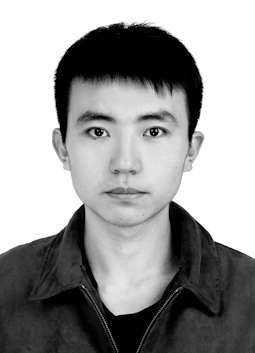Fei Wu
Fei Wu
 https://orcid.org/0000-0003-4196-0289
https://orcid.org/0000-0003-4196-0289
Academic CV
- Since 09/2023:
Postdoctoral researcher at the Pattern Recognition Lab, Department of Computer Science 5, Friedrich-Alexander-Universität Erlangen-Nürnberg, Erlangen, Germany. - 09/2017 – 07/2023:
Doctor of Philosophy, School of Electrical, Electronics and Communication Engineering, University of Chinese Academy of Sciences, Beijing, China. - 09/2013 – 07/2017:
Bachelor of Engineering, School of Computer Science and Engineering, Central South University, Changsha, China.
Projects
2023
-
Research on handwriting analysis, object tracking and segmentation based on machine learning
(Own Funds)
Term: November 16, 2023 - December 1, 2024As an important issue in the first step of digitizing scanned documents, this project will focus on line segmentation and text recognition. Line segmentation can be regarded as instance segmentation or polygon detection. In this work, we will first assess the performance of our recently proposed model: AMD-HookNet and HookFormer. After making a comparison with the current state-of-the-art line segmentation methods, deeper research based on these two baseline models is required. Both architecture improvements and novel global-local interaction strategies will be investigated. Furthermore, the text recognition technique will be developed as a unified end-to-end segmentation-free approach for addressing the unnecessary two-phrase recognition problem.
This project will investigate state-of-the-art algorithms for achieving accurate and stable object tracking and segmentation. Nowadays, Siamese trackers dominate the tracking field. The balanced fast inference speed and relatively high performance have caught the researchers’ attention. However, Siamese trackers mostly rely on large dataset offline training to learn the general representative capability for an arbitrary given target object. This ignores the target context relationship from adjacent frames. In addition, both CNNs and ViTs are used as feature extractors while the combination of local fine-grained and global coarse representation is still unexplored. We will implement CNNs- and ViTs-based improvements on a baseline tracker (TransT or a pure ViT) and then evaluate them on several well-known public datasets to validate their effectiveness.
Publications
2025
Journal Articles
- , , , , , , , :
Lightweight cross-attention-based HookNet for historical handwritten document layout analysis
In: International Journal on Document Analysis and Recognition (2025)
ISSN: 1433-2833
DOI: 10.1007/s10032-025-00519-9
URL: https://link.springer.com/article/10.1007/s10032-025-00519-9
BibTeX: Download - , , , , :
Deep learning-based debris flow hazard detection and recognition system: a case study
In: Scientific Reports 15 (2025), Article No.: 6789
ISSN: 2045-2322
DOI: 10.1038/s41598-025-86471-4
URL: https://www.nature.com/articles/s41598-025-86471-4
BibTeX: Download - , , , , , , , , , :
Data-efficient handwritten text recognition of diplomatic historical text
In: Multimedia Tools and Applications (2025)
ISSN: 1380-7501
DOI: 10.1007/s11042-024-20545-9
URL: https://link.springer.com/article/10.1007/s11042-024-20545-9
BibTeX: Download
2024
Journal Articles
- , , , , , , , :
G2EMOT: Guided Embedding Enhancement for Multiple Object Tracking in Complex Scenes
In: IEEE Transactions on Instrumentation and Measurement 73 (2024), p. 1-14
ISSN: 0018-9456
DOI: 10.1109/TIM.2024.3449952
URL: https://ieeexplore.ieee.org/document/10653748
BibTeX: Download - , , , , , , :
Contextual HookFormer for Glacier Calving Front Segmentation
In: IEEE Transactions on Geoscience and Remote Sensing 62 (2024), p. 1-15
ISSN: 0196-2892
DOI: 10.1109/TGRS.2024.3368215
URL: https://ieeexplore.ieee.org/document/10440599
BibTeX: Download - , , , , , :
Evaluating learned feature aggregators for writer retrieval
In: International Journal on Document Analysis and Recognition 27 (2024), p. 265-274
ISSN: 1433-2833
DOI: 10.1007/s10032-024-00482-x
URL: https://link.springer.com/article/10.1007/s10032-024-00482-x
BibTeX: Download
Conference Contributions
- , , , , , :
STCMOT: Spatio-Temporal Cohesion Learning for UAV-Based Multiple Object Tracking
2024 IEEE International Conference on Multimedia and Expo (ICME) (Niagara Falls, ON, Canada, July 15, 2024 - July 19, 2024)
In: IEEE International Conference on Multimedia and Expo (ICME) 2024
DOI: 10.1109/ICME57554.2024.10688174
URL: https://ieeexplore.ieee.org/document/10688174
BibTeX: Download - , , , , , , , , , :
fang: Fast Annotation of Glyphs in Historical Printed Documents
16th IAPR International Workshop on Document Analysis Systems, DAS 2024 (Athens, August 30, 2024 - August 31, 2024)
In: Giorgos Sfikas, George Retsinas (ed.): Lecture Notes in Computer Science (including subseries Lecture Notes in Artificial Intelligence and Lecture Notes in Bioinformatics) 2024
DOI: 10.1007/978-3-031-70442-0_23
URL: https://link.springer.com/chapter/10.1007/978-3-031-70442-0_23
BibTeX: Download - , , , , , , , :
ICDAR 2024 Competition on Multi Font Group Recognition and OCR
18th International Conference on Document Analysis and Recognition, ICDAR 2024 (Athens, GRC, August 30, 2024 - September 4, 2024)
In: Elisa H. Barney Smith, Marcus Liwicki, Liangrui Peng (ed.): Lecture Notes in Computer Science (including subseries Lecture Notes in Artificial Intelligence and Lecture Notes in Bioinformatics) 2024
DOI: 10.1007/978-3-031-70552-6_23
URL: https://link.springer.com/chapter/10.1007/978-3-031-70552-6_23
BibTeX: Download
2023
Journal Articles
- , , , , :
Updating Siamese trackers using peculiar mixup
In: Applied Intelligence 53 (2023), p. 22531-22545
ISSN: 0924-669X
DOI: 10.1007/s10489-023-04546-z
URL: https://link.springer.com/article/10.1007/s10489-023-04546-z
BibTeX: Download - , , , , , , :
AMD-HookNet for Glacier Front Segmentation
In: IEEE Transactions on Geoscience and Remote Sensing 61 (2023), p. 1-12
ISSN: 0196-2892
DOI: 10.1109/TGRS.2023.3245419
URL: https://ieeexplore.ieee.org/document/10044700
BibTeX: Download
2020
Journal Articles
- , , :
Stably Adaptive Anti-Occlusion Siamese Region Proposal Network for Real-Time Object Tracking
In: IEEE Access 8 (2020), p. 161349-161360
ISSN: 2169-3536
DOI: 10.1109/ACCESS.2020.3019206
URL: https://ieeexplore.ieee.org/document/9175016
BibTeX: Download
